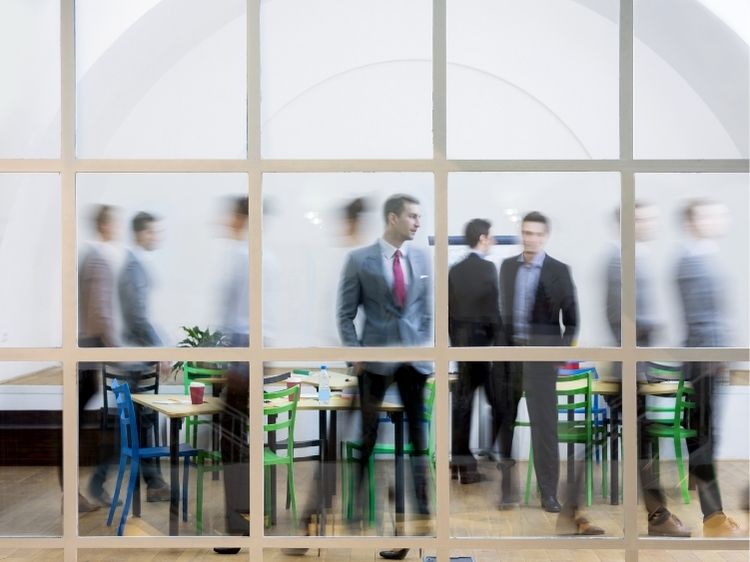In today’s professional world, the concept of business casual has evolved into something every man needs to master. But let’s face it, navigating the tricky waters of business casual can be confusing. What counts as too casual? Is a blazer necessary, or can you skip it? Well, you’ve come to the right place. This guide on business casual for men will walk you through everything you need to know to dress sharp while keeping it cool and comfortable. By the end of this article, you’ll feel like you’ve got the dress code on lock.
What Is Business Casual for Men?
The term business casual might sound like a contradiction, but it’s really just about finding a balance between professional and comfortable attire. Imagine you’re going to work at an office that’s not super strict about suits but still expects you to look professional.
In short, business casual for men includes:
- Shirts: Button-up shirts, polo shirts, or dress shirts with subtle patterns.
- Pants: Chinos, slacks, or tailored trousers.
- Shoes: Leather shoes, loafers, or dress boots.
- Jackets: Blazers are optional, but always a sharp addition.
It’s a refined look without the need for a full suit and tie combo. But be careful—there’s a fine line between looking sharp and looking like you’re heading to a backyard BBQ.
Essential Items for a Business Casual Wardrobe
To build a versatile business casual wardrobe, you’ll need a few essential pieces. Here’s a list of must-haves for any guy wanting to master this dress code:
- Button-Up Shirts
- A crisp white shirt is non-negotiable. It goes with everything and always looks polished.
- Light blue or subtle striped patterns add some variety.
- Tailored Trousers or Chinos
- Khaki, navy, or grey chinos can instantly elevate your look.
- Avoid jeans unless explicitly allowed. Even dark, non-distressed jeans can push the boundaries.
- Blazers and Jackets
- A well-fitted blazer, even in casual settings, makes a powerful statement.
- Stick to neutral tones like navy or grey for maximum versatility.
- Leather Shoes
- Brogues, loafers, and oxford shoes in brown or black leather are ideal. Sneakers are usually a no-go unless your workplace allows them.
- Accessories
- Simple accessories like leather belts, wristwatches, and subtle cufflinks can add a bit of personality without being overpowering.
How to Mix and Match for Different Occasions
Business casual doesn’t mean you’re stuck with the same outfit every day. You can easily mix and match pieces to adapt to various work environments or even casual business meetings.
- Monday Meeting: A light blue button-up shirt with navy chinos and brown loafers. Throw on a blazer if you need that extra bit of formality.
- Friday Chill: A fitted polo shirt with grey chinos and loafers, no jacket necessary. If your office leans more casual on Fridays, this is a good balance.
- Client Lunch: Opt for a white dress shirt, charcoal trousers, and dark brown shoes. Add a watch for a bit of polish.
Business Casual Men: What to Avoid
Here’s where things get tricky. While business casual gives some room to play with different styles, there are still some no-go zones:
- T-shirts or graphic tees – Leave them for weekends.
- Ripped jeans or distressed clothing – This may seem obvious, but it’s worth mentioning.
- Loud patterns or overly bright colors – Business casual should feel sophisticated, not loud.
- Sneakers or flip-flops – Even in more relaxed environments, professional footwear is key.
Why Fit Is Everything
Even the best pieces will fall flat if they don’t fit right. Baggy shirts or ill-fitting trousers can ruin your entire outfit. Here’s how to make sure your clothes are always on point:
- Shirts: The shoulder seams should align with your actual shoulders. The sleeve length should stop just before your wrist.
- Trousers: Aim for a tailored fit that’s not too tight but not baggy either. Slim-fit trousers usually work well for a sleek, modern look.
- Blazers: When buttoned, the blazer should not pull or feel too snug. It should contour to your body without any loose fabric.
Why the Right Fabrics Matter
Choosing the right fabrics can also make or break your business casual outfit. Comfort is key when you’re spending hours in these clothes.
- Cotton: Perfect for breathability, especially in hot weather.
- Wool: Ideal for trousers and blazers in cooler seasons.
- Linen: Great for summer months but can wrinkle easily, so use sparingly.
FAQs About Business Casual for Men
Q1: Can I wear jeans in a business casual environment?
Yes, but with caution. Opt for dark, non-distressed jeans and pair them with a button-up shirt and blazer for a polished look.
Q2: Are sneakers ever okay for business casual?
In some creative or tech industries, you might get away with sleek, minimal sneakers. But in most traditional settings, it’s best to stick with leather shoes.
Q3: Is a tie necessary for business casual?
Nope! The whole point of business casual is to relax the formality a bit. However, you can always add a tie if you’re heading to an important meeting or want to elevate your outfit.
Q4: How can I maintain a business casual look in the summer?
Lightweight fabrics like linen and cotton will keep you cool. Swap out the blazer for a light vest or skip it altogether.
Q5: Can I wear patterns in business casual?
Absolutely! Just keep them subtle. Think light stripes, checks, or even a small polka dot.
Conclusion: Mastering the Business Casual Look
When it comes to business casual men dressing, the key is striking that perfect balance between professional and relaxed. Stick to classic pieces like button-up shirts, chinos, and leather shoes, and you’ll be well on your way. Always ensure your fit is on point, and don’t shy away from adding a little personal flair through accessories or subtle patterns. Now that you’ve got the rundown, go ahead and own that business casual look!

